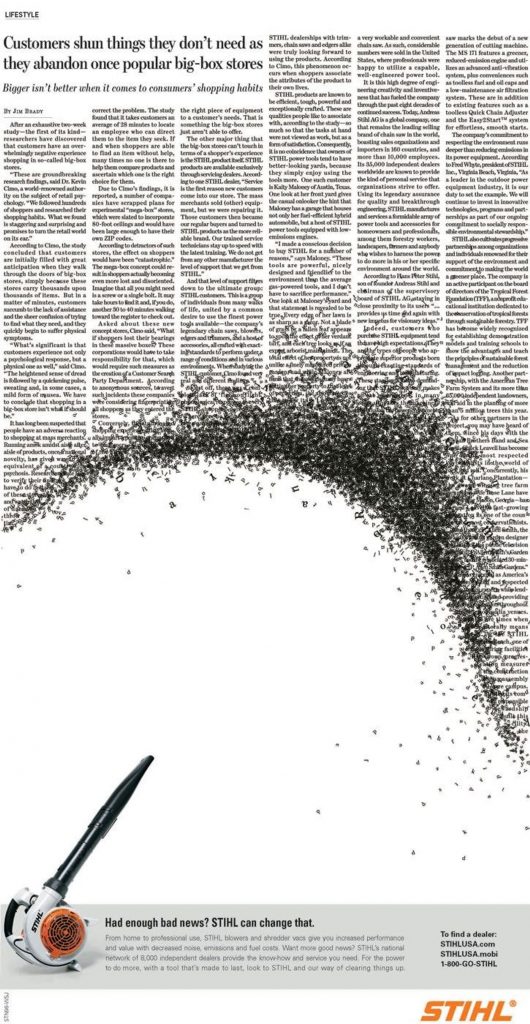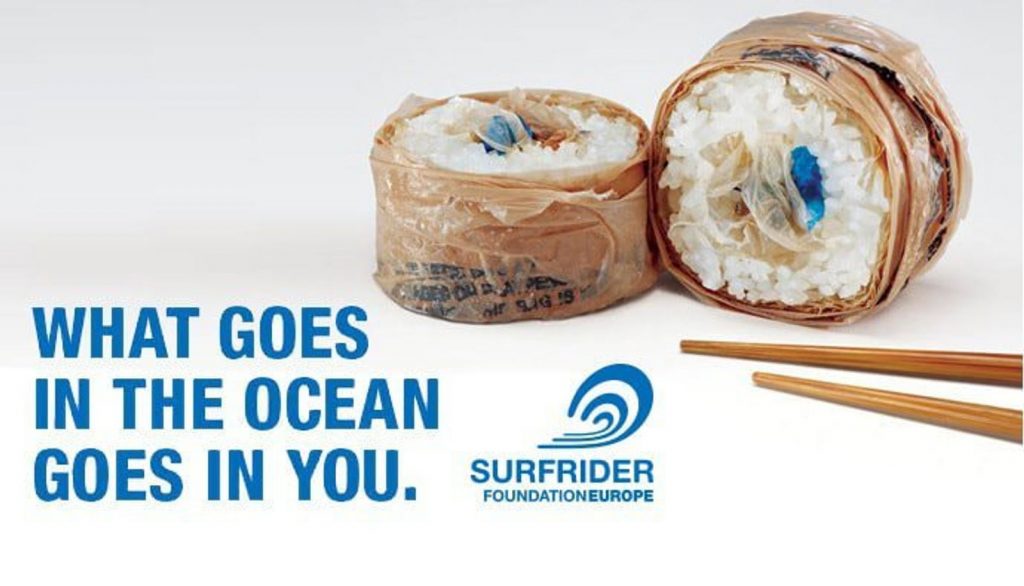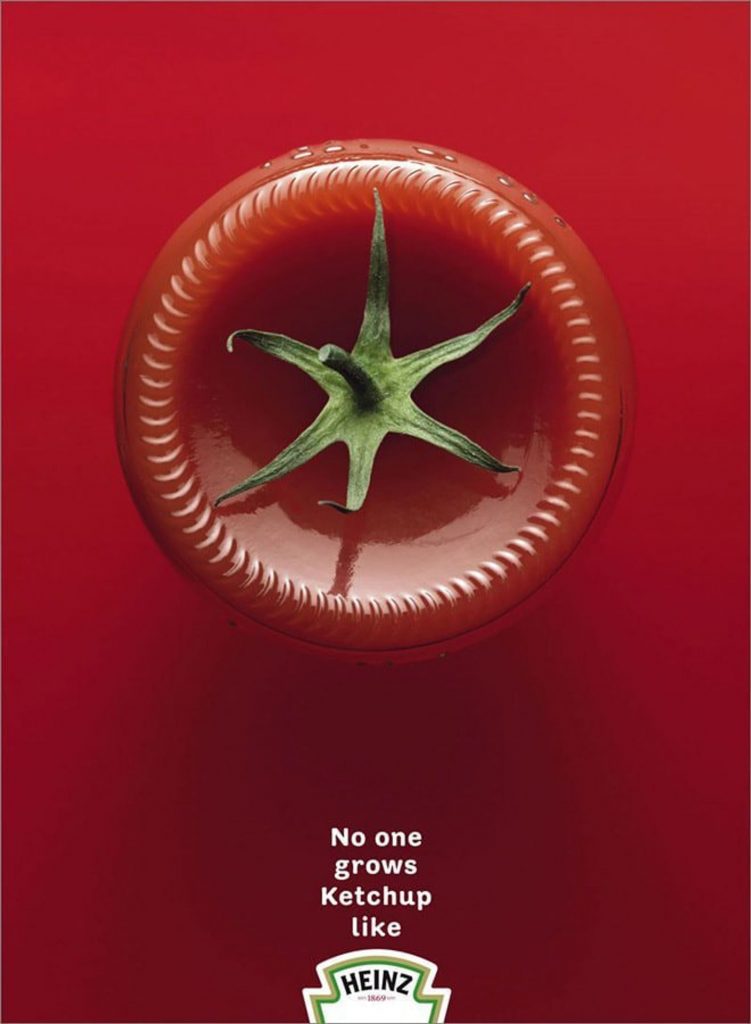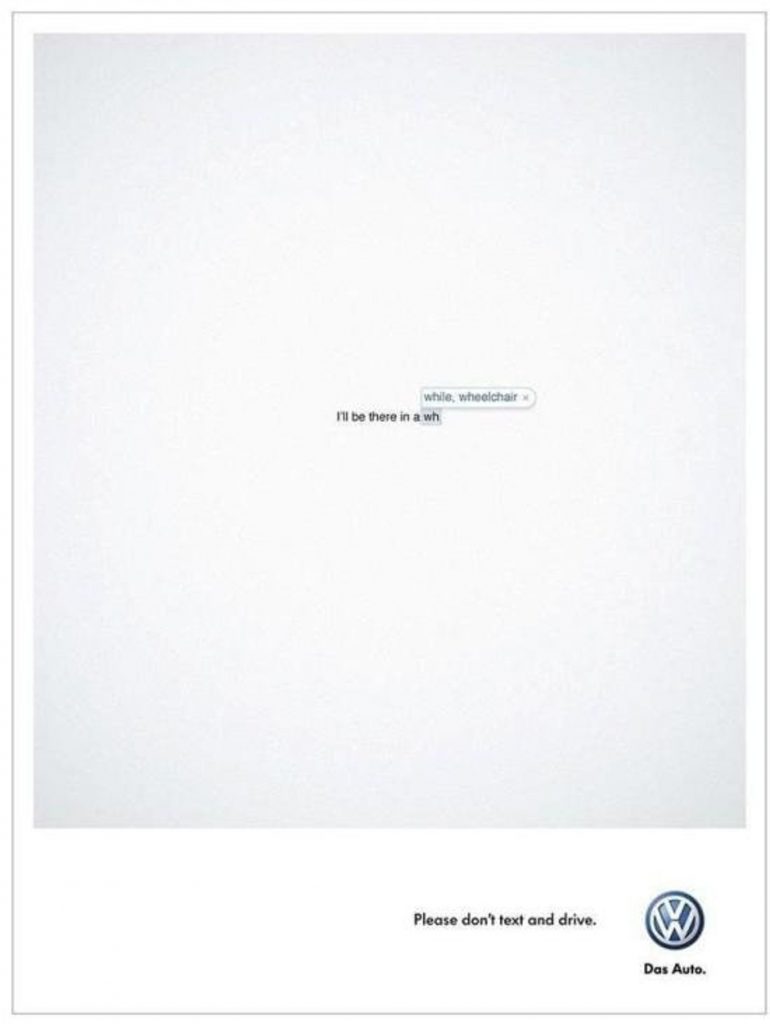
Author: David Greenwood
♦️ Volkwagen Sharan Bigger Inside

💎 How Hitchcock drummed up interest in Psycho by making it harder to watch
In the first few decades of cinema, patrons would buy a ticket that granted general admission to the theatre. Several features would be playing on a loop, and you could choose whichever you fancied. You might enter halfway through the main movie, watch it until the end, see the cartoons and the newsreel and then start from the beginning to catch what you’d missed. It functioned rather like a big public television. Then, in 1960, a director decreed that no one would be permitted to enter screenings once his new film had begun: the integrity of the viewing experience was paramount. The film was Psycho and Alfred Hitchcock’s edict – part artistic statement, part marketing ploy – placed new emphasis on plot twists in the final act. (He also asked critics not to discuss those key details.)
Excerpt from: Unconventional Wisdom: Adventures in the Surprisingly True by Tom Standage
💎 How economics affects culture – in the 1950s average duration of US pop songs dropped to 2:30
We’ve been here before, where the business affected the show (or the tail wagged the dog). The first iteration of the phonograph could only hold about two to three minutes of music. It is said Puccini used to deliberately write arias that could be cut into three-minute segments that could fit on one side of a 78-rpm disc, arguably making him the first ever pop writer. Elderton notes that during the late 1950s and early 1960s, the average duration of American pop songs fell to 2 minutes and 30 seconds. As the mafia owned and controlled jukeboxes across America, they insisted that a record was limited to 2 minutes 30 seconds, allowing them to boost their take-per machine considerably.
Excerpt from: Tarzan Economics: Eight Principles for Pivoting through Disruption by Will Page
♦️ WWF Give Wildlife a Hand

💎 How chunking a goal can boost the likelihood it’s achieved
Consider a study I helped conduct, led by my doctoral student Aneesh Rai, which involved thousands of volunteers at a large nonprofit who had promised to work two hundred hours within a year of joining but were falling short of their pledge. Knowing that facing such a massive goal can be demotivating, my collaborators and I instead asked the volunteers to comm it to four hours each week or eight hours every two weeks-which, of course, is basically the same as two hundred hours a year. But these smaller commitments, despite amounting to the same annual pledge, yielded 8 percent more time volunteering overall than simply prompting people to make progress on a yearly commitment. (Likewise, the online financial services company Acorns has found that it’s more effective when people are asked to set aside monthly even though these amount to the same thing.) If a commitment is bite-size, it appears less daunting to us, and we’re more likely to stick to our world.
Excerpt from: How to Change: The Science of Getting from Where You Are to Where You Want to Be by Katy Milkman
♦️ LEGO Imagine

💎 How adding human features to a self driving car made people trust it more
A team of researchers in the United States designed a study to determine whether more people would trust a self-driving car if it had anthropomorphic features. A hundred participants were divided into three groups and asked to sit in a highly sophisticated driving simulator. The first group, the control, were driving a ‘normal’ vehicle. The second were in a driverless vehicle but with no anthropomorphic features. The last were in the same vehicle but it was called ‘Iris’ and given a gender (notably female). A soothing voice played at different times. The participants were asked an array of questions during the course, such as ‘How much would you trust the vehicle to drive in heavy traffic?’ and ‘How confident are you about the car driving safely?’ As the researchers predicted, when participants believed Iris was behind the wheel, it significantly increased their trust in the driverless vehicle. Remarkably, after the cars got into a preprogrammed crash, those in the Iris group were less likely to blame the car for the accident.
Excerpt from: Who Can You Trust?: How Technology Brought Us Together and Why It Might Drive Us Apart by Rachel Botsman
♦️ WWF Don’t Buy Exotic Animal Souvenirs

💎 How language can shape our attitudes and behaviours
Consider an example from the insurance world. Back in the 1930s, executives at the Hartford Fire Insurance Company in Connecticut realized that warehouses which contained oil drums kept blowing up. Nobody knew why. The company asked a fire-prevention engineer named Benjamin Whorf to investigate. Although Whorf was a trained chemical engineer, he had also done research in anthropology and linguistics at Yale, with a focus on the Hopi Native American communities. So, he approached the problem with an anthropologist’s mindset: he observed warehouse workers, noting what they did and said, crying to absorb everything without prior judgment. He was particularly interested in the cultural assumptions embedded in language, since he knew these could vary. Consider seasons. In English, “season” is a noun, defined by the astronomical calendar (“summer starts on June 20,” people say). In the Hopi language and worldview “summer” is an adverb defined by heat, not the calendar (it feels “summer(y)”). Neither is better or worse; but they are different. People cannot appreciate this distinction unless they compare. Or as Whorf observed: “We always assume that the linguistic analysis made by our group reflects reality better than it does.”
This perspective solved the oil drum mystery. Whorf noticed that the workers were careful when handling oil drum marked as “full.” However, workers happily smoked in rooms that stored drums “empty.” The reason? The word “empty” in English is associated with “nothing”; it seems boring, dull, and easy to ignore. However, “empty” oil drums are actually full of flammable fumes. So, Whorf told the warehouse managers to explain the dangers of “empty” to workers and explosions stopped. Science alone could not solve the mystery. But cultural analysis-with science-could. The same principle (namely using antho-vision to see what we ignore) is equally valuable when mysterious problems erupt in modern bank trading floors, corporate mergers, or pandemics, say.
That is because, “the least questioned assumptions are often the most questionable,” as the nineteenth-century French physician and anthropologist Paul Broca reputedly said. It is a dangerous mistake to ignore the ideas we take for granted, be that about language, space, people…
Excerpt from: Anthro-Vision: How Anthropology Can Explain Business and Life by Gillian Tett
♦️ BMW M3 Created for Real Speed Experts

💎 Our tendency to underestimate the variance – or noise – in business
In a well-run insurance company, if you randomly selected two qualified underwriters or claims adjusters, how different would you expect their estimates for the same case to be? Specifically, what would be the difference between the two estimates, as a percentage of their average?
We asked numerous executives in the company for their answers, and in subsequent years, we have obtained estimates from a wide variety of people in different professions. Surprisingly, one answer is clearly more popular than all others. Most executives of the insurance company guessed 10% or less. When we asked 828 CEOs and senior executives from a variety of industries how much variation they expected to find in similar expert judgments, 10% was also the median answer and the most frequent one (the second most popular was 15%). A 10% difference would mean, for instance, that one of the two underwriters set a premium of $9,500 while the other quoted $10,500. Not a negligible difference, but one that an organization can be expected to tolerate.
Our noise audit found much greater differences. By our measure. the median difference in underwriting was 55%, about five times as large as was expected by most people, including the company’s executives.
Excerpt from: Noise: A flaw in human judgement by Daniel Kahneman, Olivier Sibony and Cass R. Sunstein
♦️ Stihl Blow Away Bad News

💎 The four steps that lead to the quantification fallacy
The first step is to measure whatever can be easily measured. This is okay as far as it goes. The second step is to disregard that which can’t be easily measured, or to give it an arbitrary quantitative value. This is artificial and misleading. The third step is to presume that what can’t be measured easily really isn’t important. This is blindness. The fourth step is to say that what can’t be easily measured really doesn’t exist. This is suicide.
Excerpt from: Tarzan Economics: Eight Principles for Pivoting through Disruption by Will Page
💎 Putting safety before profit
the largest impact-would come not from Detroit but from Sweden. In the mid-fifties, Volvo hired an aeronautical engineer named Nils Bohlin, who had been working on emergency ejection seats at Saab’s aerospace division. Bohlin began tinkering with a piece of equipment that had been largely an oversight in most automobiles up until that point: the seat belt. Many cars were sold with out any seat belts at all; the models that did include them offered poorly designed lap belts that offered minimal protection in the event of a crash. They were rarely worn, even by children.
Borrowing from the approach to safety restraint used by military pilots, Bohlin quickly developed what he called a three-point design. The belt had to absorb g-forces on both the chest and the pelvis, minimizing soft tissue stress under impact, but at the same time it had to be simple to snap on, easy enough that a child could master it. Bohlin’s design brought together a shoulder and lap belt that buckled together in a V formation at the passenger’s side, which meant the buckle itself wouldn’t cause injuries in a collision. It was an elegant design, the basis for the seat belts that now come standard on every car manufactured anywhere in the world. An early prototype of the shoulder strap had decapitated a few crash dummies, which led to a rumor that the seat belt itself could kill you in a crash. To combat those rumors, Volvo actually hired a race-car driver to perform death-defying stunts-deliberately rolling his car at high speeds-all the time wearing Nils Bohlin’s three-point seat belt to stay safe,
By 1959, Volvo was selling cars with the three-point seat belt as a standard feature. Early data suggested that this-one addition was single-handedly reducing auto fatalities by 75 percent. Three years later, Bohlin was granted patent number US3043625A by the US Patent and Trademark Office for a “Three-point seat belt systems comprising two side lower and one side upper anchoring devices.” Recognizing the wider humanitarian benefits of the technology, Volvo chose not to enforce the patent-making Bohlin’s design freely available to all car manufacturers worldwide. The ultimate effect of Bohlin’s design was staggering. More than one million lives-many of them young ones-have been saved by the three-point seat belt. A few decades after it was awarded, the Bohlin Patent was recognized as one of the eight patents to have had “the greatest significance for the humanity” over the preceding century.
Excerpt from: Extra Life: A Short History of Living Longer by Steven Johnson
♦️ WWF Respect the Planet

💎 People acclimatise to greater wealth meaning enough is never enough
A team led by psychologist Professor Michael Norton contacted over two thousand people whose net worth started at one million dollars and rose to an awful lot more. They were asked to rate their happiness on a ten-point scale, then say how much cash they’d need to be perfectly happy. ‘All the way up the income-wealth spectrum,’ Norton reported, ‘basically everyone says two or three times as much.’
Excerpt from: The Status Game: On Social Position and How We Use It by Will Storr
♦️ SurfRider What Goes in the Ocean Goes in You

💎 The power of reframing costs in a B2B context
In the same way, in the early stages of a food delivery brand (now worth over £1bn), the proposal was to pay the restaurant directly for each meal it supplied and then to invoice them monthly for the commission on the month’s past sales. A marketing thinker pointed out that this was a mistake. “We should keep the money from each meal sold, deduct commission, and then send them a payment every month”. He or she understood that, if the restaurant saw the new business as a source of incremental revenue they would value it; if they saw it primarily as a cost, they would look for ways to avoid it. Again, in economic terms, there is no difference between the first proposal and the second, but the psychological effect on the business will be dramatically different.
Excerpt from: The Objectivity Trap by Rory Sutherland
💎 A Cloughism for the Twitter age
As Brian Clough, the famous football manager, said: “Don’t argue with idiots. They’ll bring you down to their level and then beat you with experience.”
Excerpt from: The Smart Thinking Book: 60 Bursts of Business Brilliance by Kevin Duncan
♦️ Tide Remove Stains in One Go

💎 Even short breaks can disrupt habits
Recent research suggests that anything more than a short lapse in a behavior we hope to make habitual (say, multiple missed visits to the gym rather than just one) can be costly. Seinfeld’s mantra “Don’t break the streak” is astute. It also helps explain the logic behind twenty-eight-pill packages of birth control. Scientifically speaking, the pills are necessary only on the first twenty-one days of a twenty-eight-day menstrual cycle. However, most birth control packages include seven sugar pills along with twenty-one hormone pills to ensure that people on birth control won’t fall out of the bit.
Excerpt from: How to Change: The Science of Getting from Where You Are to Where You Want to Be by Katy Milkman
♦️ Heinz Ketchup No One Grows Ketchup Like Us

💎 How attempting to multitask damages our attention 100 things
Many times, we think we are multitasking well and we aren’t. A study by Ira Hyman (2009) showed that people walking while talking on cell phones ran into people (literally) more often, and were less likely to notice what was around them than people who were not talking on cell phones. The researchers had someone in a clown suit ride by on a unicycle. The people talking on a cell phone were much less likely to notice or remember the clown than those who were not multitasking,
Excerpt from: 100 Things Every Designer Needs to Know About People (Voices That Matter) by Susan Weinschenk
💎 How Noma surprise diners and create a peak moment
4.5.3 Camouflage
“Your first two courses are already on the table.” Yes, that’s what the diners are told by the waiter at Noma after being seated. This all seems very strange however, as there is nothing on the table. Well, nothing that is other than a collection of plant pots in the center (the clue being the fact that there are exactly as many flowerpots as there are diners at the table). The diner is expected to bring the pot closer and then to start digging with nothing else but their hands into the ‘soil’, eating everything they find, including the roots! This starter, camouflaged as it is in a terracotta flower pot, consists of carrots and radishes planted in a dark brown, crunchy edible mixture of malt and hazel· nut flour (which gives a pretty good visual impression of soil) and a greenish yoghurt-based sauce lying at the very bottom (see Figure 4.9a). As a friend who was lucky enough to try this dish put it: “The crunch malt crumble hit the palate followed by the creamy dip and the spicy and fresh crunchy radish. It was a good harvest.” This dish, in the way that it is presented and in the given hidden conceptual incongruity as we’ll discuss in Chapter 7.
Excerpt from: The Perfect Meal: The Multisensory Science of Food and Dining by Betina Piqueras-Fiszman, Charles Spence and Heston Blumenthal
💎 How saying it strange can make it more memorable
Say it strange
Why did Apple say ‘Think different’ and not ‘Think differently’? Why did they follow this with ‘The funniest iPod ever’ rather than something like ‘The most enjoyable iPod we’ve ever made’? Why does Aleksandr the meerkat – spokes animal for price-comparison website comparethemarket.com – say ‘Simples’ and not ‘Simple’? Why did 7UP promote itself as ‘The Uncola’? Why did Budweiser decide ‘Whasssup”’ was the perfect way to build their brand? We’ll tell you why: they’re all examples of a linguistic quirk used to create a mighty meme. By twisting language just, a little they achieved maximum memorability. It’s a powerful technique but be warned, it’s easy to get wrong.
Excerpt from: Read Me: 10 Lessons for Writing Great Copy by Roger Horberry and Gyles Lingwood
♦️ Volkswagen Don’t Text and Drive

💎 On the power of a deadline
Prospective borrowers must complete a lengthy online application to be considered for a loan. Many of them begin the application but don’t finish it. Kiva enlisted the Common Cents Lab, a behavioral research laboratory, to come up with a solution.
Their suggestion: Impose an ending. Give people a specific deadline a few weeks away for completing the application. On one level, this idea seems idiotic. A deadline surely means that some people won’t finish the application in time and therefore will be disqualified for the loan. But Kiva found that when it sent applicants a reminder message with a deadline, compared with a reminder message without a deadline, 24 percent more borrowers completed the application.” Likewise, in other studies, people given a hard deadline—-a date and time—are more likely to sign up to be organ donors than those for whom the choice is open-ended.
Excerpt from: When: The Scientific Secrets of Perfect Timing by Daniel Pink
♦️ Sears Optical Eagle

💎 The full text of the 1996 Apple Think Different ad
Here’s to the crazy ones. The misfits. The rebels. The troublemakers. The round pegs in the square holes. The ones who see things differently. They’re not fond of rules. And they have no respect for the status quo. You can quote them, disagree with them, glorify or vilify them.
But the only thing you can’t do is ignore them. Because they change things. They invent. They imagine. They heal. They explore. They create. They inspire. They push the human race forward. Maybe they have to be crazy.
How else can you stare at an empty canvas and see a work of art? Or sit in silence and hear a song that’s never been written? Or gaze at a red planet and see a laboratory on wheels? We make tools for these kinds of people.
While some see them as the crazy ones, we see genius. Because the people who are crazy enough to think they can change the world, are the ones who do.
Excerpt from: Actionable Gamification: Beyond Points, Badges and Leaderboards by Yu-kai Chou





























